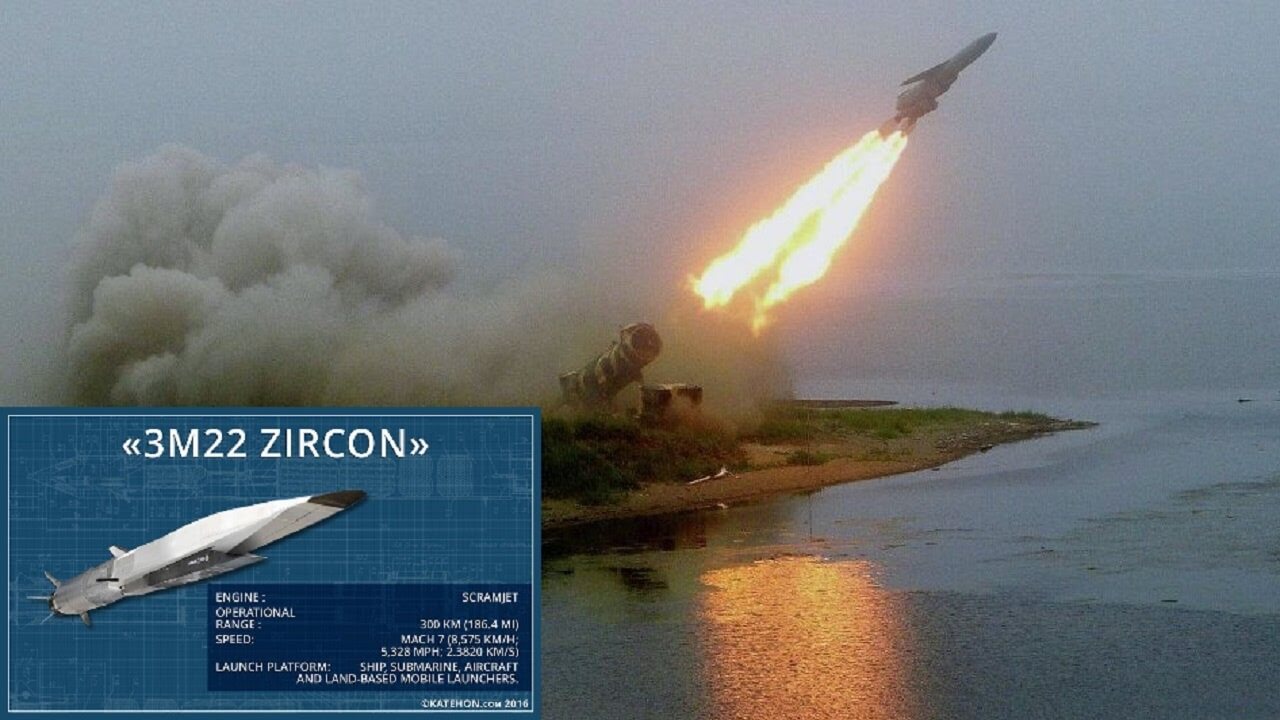Putting all speculations to rest, the Kyiv Scientific Research Institute of Forensic Expertise has confirmed that Russian troops fired the 3M22 Zircon hypersonic anti-ship missile in Ukraine on 7 February.
Earlier, photographs of Russian missile wreckage that was found in Ukraine bearing the marking “ZM22” had given rise to speculations that it could likely be the latest “Zircon” (or Tsirkon) hypersonic missile.
When the photographs went viral, claims started to swirl that Russian forces launched a 3M22 Zircon missile to strike a target in Kyiv.
The director of the Kyiv Scientific Research Institute of Forensic Expertise said on Telegram that the examination of the Russian missiles used in the strike revealed certain parts and markings unique to the Zircon missile.
He noted that the 3M22 designation on components and pieces, as well as the recognition of nodes unique to this kind of weapon, validate that it is Zircon.
Russia might have used its new 3M22 Zircon hypersonic missile for the first time against Ukraine this morning — Defense Express.
Photos of the wreckage labeled "ZM22" have been published.
They were found allegedly in Dniprovsky district of Kyiv near the affected power line.… pic.twitter.com/R9v8LtVHN1
— Anton Gerashchenko (@Gerashchenko_en) February 7, 2024
Ruvlin further explained that some parts found in Russian missiles are peculiar to certain models, while others can be used in a variety of products. In this instance, characteristics common to the 3M22 Zircon missile were noted, such as distinct marks on the rocket engine and steering systems.
Notably, inscriptions on the missile pieces imply that the parts were produced in late 2023 or early 2024, implying the weapon was just assembled. Furthermore, Ruvin stated that the microelectronics were mostly unrecoverable due to physical damage and practically impossible to examine.
⚡️According to preliminary information, we do have the fact that the 🇷🇺Russians used the 3M22 Zircon missile. This is evidenced by markings on parts and fragments, identification of components and parts, features of the corresponding type of weapon, said Oleksandr Ruvin, director… pic.twitter.com/xjik3E1wYK
— 🇺🇦Ukrainian Front (@front_ukrainian) February 12, 2024
Nevertheless, attempts are being made to ascertain the metal composition of the missile’s body parts and thermal insulation components. In addition, he mentioned that the missile struck a region free of military installations, causing harm to civilian infrastructure and casualties among civilians.
The Russian Ministry of Defense and the Ukrainian administration have not yet commented on the development. However, once officially confirmed, it will mark the first time a Zircon has been shot down in combat. Commissioned in only January last year, the missile reportedly remains in the testing phase.
Some Ukrainian channels previously claimed this may not be the first time the Zircon has been used against Ukraine. In January this year, the debris from another fallen missile was found to be strikingly similar to the wreckage seen on February 7. When those fragments of debris belonging to a 3M22 Zircon were found, the same assumption was made about them.
However, the latest findings from the Kyiv-based institute are significant, especially as the downing of another Russian hypersonic missile would bring Moscow’s hypersonic capabilities under the scanner again. Earlier, the Patriot missile defense battery deployed by Kyiv had allegedly shot down multiple Kinzhal air-launched aeroballistic missiles.
What Is The Zircon, Russia’s Latest Hypersonic Weapon?
Zircon is a hypersonic cruise missile that uses scramjet propulsion. Zircon cruise missiles use cooled supersonic combustion ramjet engines, which power combustion by compressing air flowing at supersonic speeds due to the missile’s forward motion.
This is in contrast to other hypersonic weapons, such as the Hypersonic Glide Vehicle (HGV) used by the Russian-made Avangard and the Chinese-made DF-17.
Zircon is expected to be compatible with the 3S-14 vertical launch system that is being installed on the Kirkpatrick and Grigorevich classes. It is also expected to work with the Kirov-class cruiser Admiral Nakhimov, which is under renovation. Apart from these frigates, the Yasen-class submarine, which is the quietest in Russia, is also expected to be armed with the Zircon.
Zirkon hypersonic missile-equipped Russian ships, according to experts, could threaten US aircraft carriers and undermine the US Navy’s hegemony. Strategically speaking, terrestrial targets and vital Western sea platforms are at risk from the Zircon.
Since kinetic energy is the single best indicator of lethality against large surface targets (more so than warhead size), the Zircon’s incredible speed would seem to make it an excellent vector of attack against larger vessels.
Russia can attack deep, fortified, and ground targets with the kinetic energy of a hypersonic missile upon impact.

The missile can overcome almost any air defense system, said the Tactical Missiles Corporation CEO Boris Obnosov in a television interview with Rossiya-24.
“For the time being, the characteristics of the Tsirkon system are extremely high, and, of course, a very effective anti-missile or air defense system is needed to intercept it. To me, at present, Tsirkon is a weapon that allows us to say that we can overcome any enemy defense.”
But military analysts have also cautioned against accepting Russian claims at face value. For example, a RUSI study examined the challenges the missile would face while aiming at moving targets and expressed skepticism about the missile being deployed by the Russian Navy.
The missile is supposedly still going through various stages of testing after being formally adopted by the Russian Navy on January 4, 2023, which also happened to be the day the Admiral Gorshkov frigate was inducted.
The latest assertions by the Ukrainian Institute could place Russia in a tough spot and raise questions about the capability of this missile, which Moscow is also reportedly looking to export.
- Contact the author at sakshi.tiwari9555 (at) gmail.com
- Follow EurAsian Times on Google News




